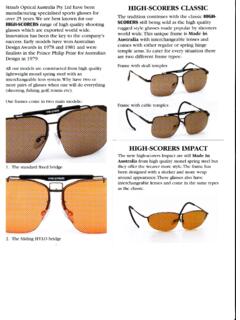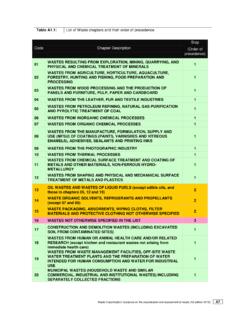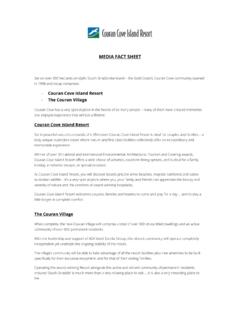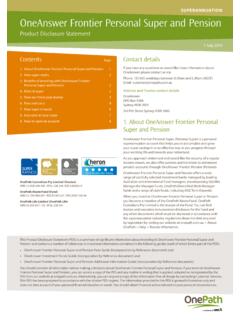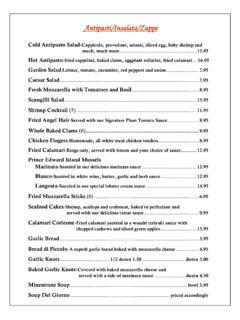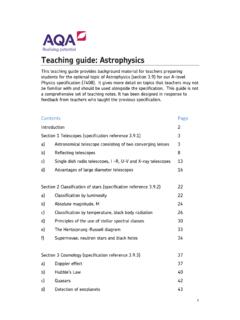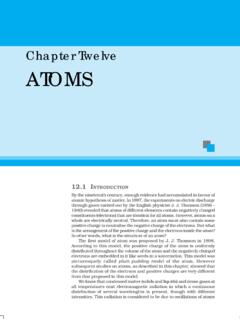Transcription of 8. ANGLES AND ANGLE PROPERTIES
1 56 8. ANGLES AND ANGLE PROPERTIES INTRODUCING ANGLES We begin our study of geometry by introducing basic concepts related to ANGLES and their PROPERTIES . These concepts build the necessary foundation for further topics in geometry such as plane geometry, geometric constructions, trigonometry and transformation geometry. In this chapter, we develop the concept of ANGLES , how to name them, and ways in which ANGLES can be classified. points , lines and rays When discussing the PROPERTIES of plane shapes, we encounter the terms points , lines and rays .
2 These are the basic elements that make up shapes. A point is considered as having no dimensions and only denotes position. A point is also said to have no size, length, width or height and hence no area or volume. However, when we have to mark a position in space on a plane, we represent a point by just a very fine dot ( ). For ease of recognition, we either draw a circle around it or place an x so that the center of the x is the position we wish to represent.
3 When a point moves in a constant or fixed direction, the path it traces out is a line . A line continues indefinitely in both directions. The following table illustrates the differences between lines, line segments and rays . Geometric terms Illustration A line has no beginning point or end point. The arrows indicate that a line is infinite in length. A line segment, though, has a beginning point and an ending point. It is a finite or a measurable portion of a line .
4 The dots indicate that a line segment has a finite length. The line starts and ends with an other dot. A ray has a beginning point, but no end point. The dot shows the starting point of the ray and the arrow indicates that it has infinite length. When a point moves in such a way that its direction is not constant or fixed, a curved line is formed. Like straight lines, curved lines can be finite as well as infinite.
5 Defining ANGLES An ANGLE is a measure of the rotation or turn of a ray about its fixed point. The fixed point is called the vertex, whose plural is vertices. The diagram below shows how an ANGLE is formed when the direction of turn is anticlockwise. The amount of turn, shown by the red arrow, is the measure of the ANGLE . The above definition is based on a more dynamic view of an ANGLE that is consistent with the newer geometries often referred to as, motion geometry.
6 In Euclidean geometry, a more static view of an ANGLE was envisioned. In this view, ANGLES are seen as static, formed when two rays meet at a point, called the vertex. Classification of ANGLES by size of turn ANGLES are classified according to the size of the turn. Measure of ANGLE Name Less than 90 Acute ANGLE Exactly 90 Right ANGLE Greater than 90 but less than 180 Obtuse ANGLE Exactly 180 Straight ANGLE or half turn Greater than 180 Reflex ANGLE Exactly 3600 Whole turn or full rotation 57 Unit for measuring ANGLES At this level, we will only consider one unit of measure for ANGLES , the degree.
7 A complete turn is equal to 360 degrees, written as 360 . Unlike units for length, capacity and mass, the units for ANGLES are not decimalised. This was not possible because angular measure originated from measures related to the earth. Using a protractor to measure ANGLES A protractor is an instrument used for measuring ANGLES . It is usually semi-circular in shape and measures ANGLES whose magnitudes lie from 0 to 180 degrees. On the protractor, there are two scales, an inner scale and an outer scale.
8 When measuring an ANGLE , either scale can be used. But, we must position the protractor so that one of the arms of the ANGLE is exactly on the zero line and the center of the protractor is at the vertex of the ANGLE . We are interested in measuring the amount of turn of the ray from its initial position to its final position. In each of the cases below, we measure the ANGLE as the ray turns from the horizontal position to a new position. This is an anti-clockwise turn.
9 The amount of turn, in this case, lies between 30 and 40 degrees, seen on the inner scale. To get a more accurate reading, we use the outer scale and this gives us a reading of 350. This is a clockwise turn. The amount of turn, in this case, lies close to 50 degrees, seen on the outer scale. A closer look at the outer scale gives us a reading of 490. Here, there is no need to read the inner scale this would give us the measure of the supplement of the ANGLE we just measured.
10 Naming ANGLES An ANGLE is named by two main methods. 1. Naming the line segments that define the ANGLE . Remember, the vertex of the ANGLE is the common point where the two lines or arms meet. This ANGLE is named ANGLE AOB or ANGLE BOA. Instead, we may use the symbol, ^, over the letter at the vertex of the ANGLE and omit the word ANGLE . This ANGLE can be named as: ANGLE AOB, ANGLE BOA, or or or 2. By assigning a letter to the ANGLE , such as x or even using Greek letters, such as , etc.




